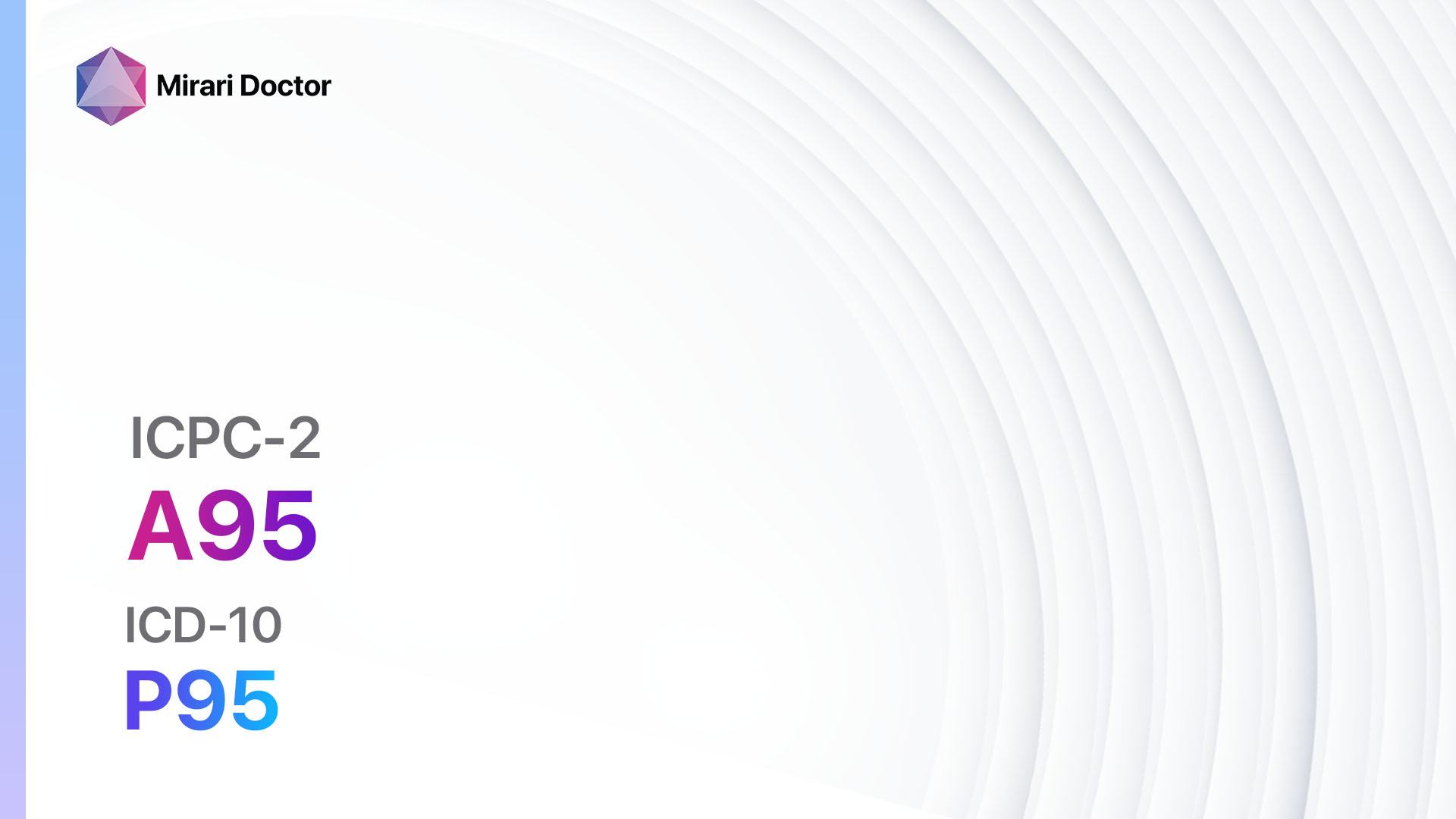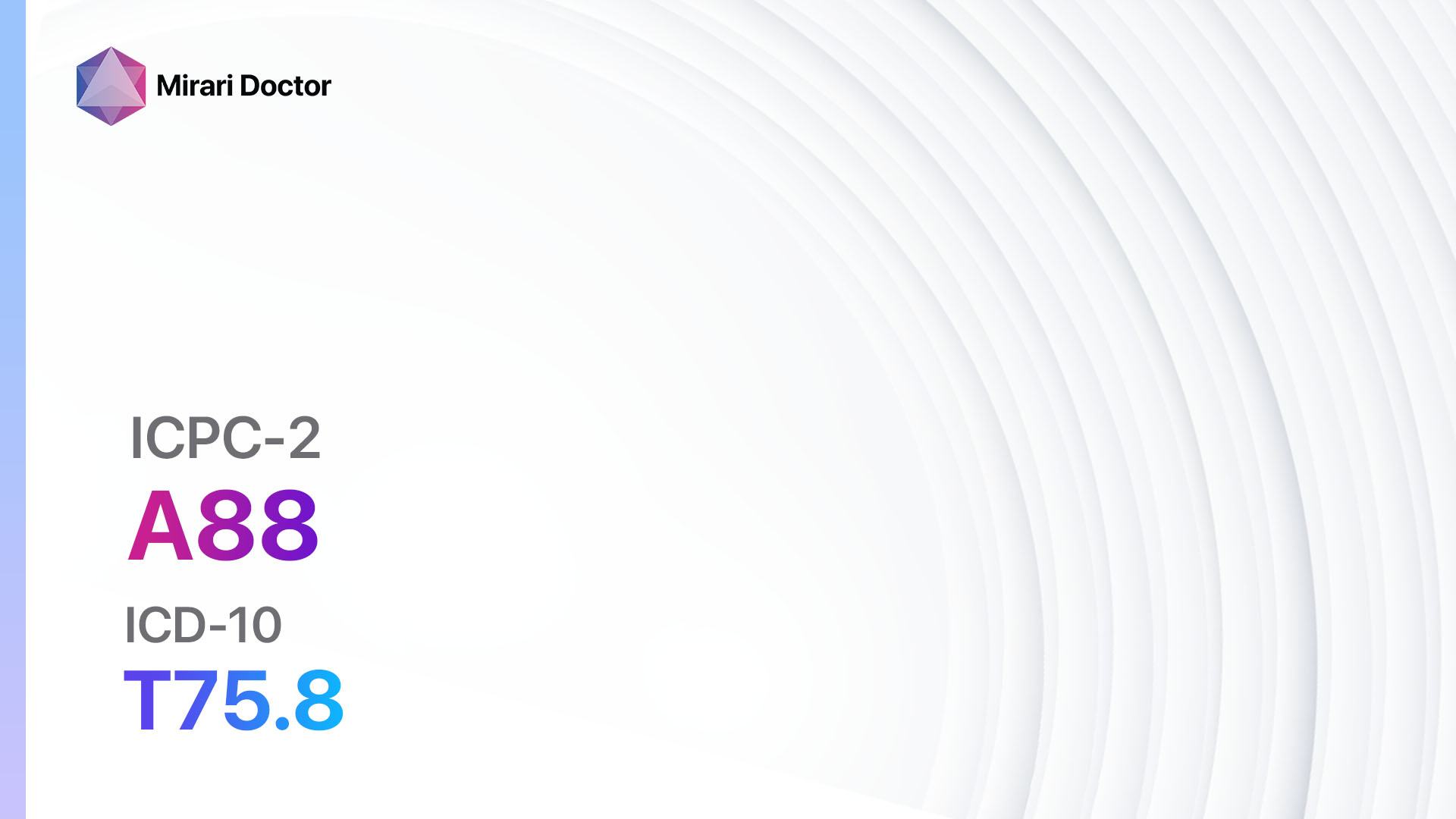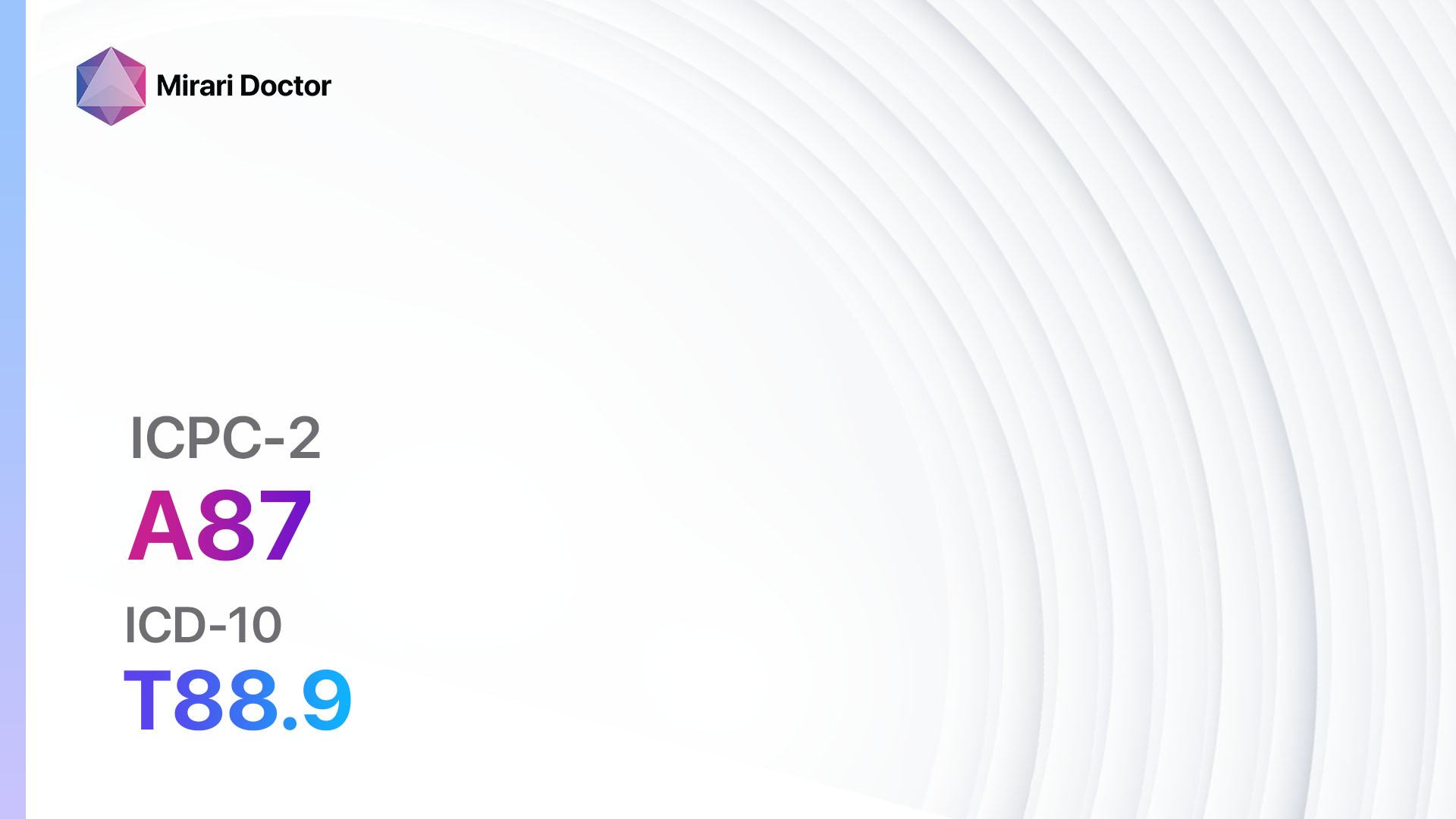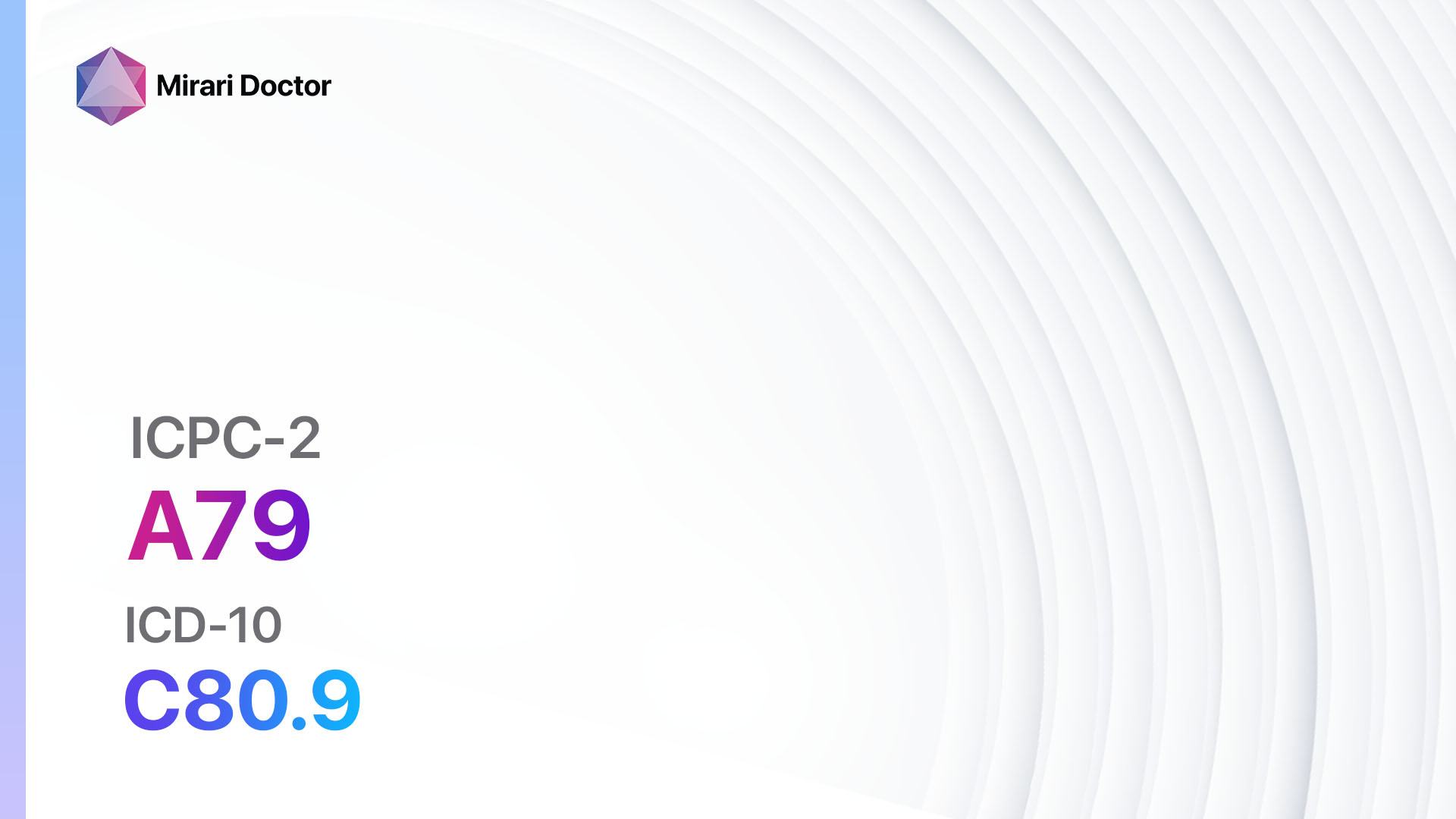
Introduction
Irritable infant is a condition characterized by excessive crying, fussiness, and irritability in infants[1]. It is a common concern for parents and caregivers, and can be challenging to manage[2]. The aim of this guide is to provide healthcare professionals with a comprehensive approach to diagnosing and managing irritable infant, including diagnostic steps, possible interventions, and patient education.
Codes
– ICPC-2 Code: A16 Irritable infant
– ICD-10 Code: R68.1 Nonspecific symptoms peculiar to infancy
Symptoms
- Excessive crying: The infant cries for more than three hours a day, for at least three days a week, for at least three weeks[3].
- Fussiness: The infant is difficult to soothe and may exhibit signs of discomfort or distress[4].
Causes
- Colic: Colic is a common cause of irritability in infants, characterized by excessive crying and fussiness. The exact cause of colic is unknown, but it is believed to be related to gastrointestinal discomfort or immature digestive system[5].
- Hunger: Infants may become irritable when they are hungry and need to be fed.
- Sleep deprivation: Lack of sleep can lead to irritability in infants.
- Overstimulation: Infants may become overwhelmed and irritable when they are exposed to too much noise, light, or activity.
Diagnostic Steps
Medical History
- Gather information about the infant’s feeding habits, including frequency and duration of feedings.
- Ask about the infant’s sleep patterns and whether they are getting enough sleep.
- Inquire about the infant’s behavior and any triggers that may be causing the irritability.
- Assess the infant’s overall health and any other symptoms they may be experiencing.
Physical Examination
- Perform a thorough physical examination to rule out any underlying medical conditions that may be causing the irritability.
- Check for signs of discomfort or pain, such as abdominal distension or tenderness.
- Assess the infant’s growth and development to ensure they are meeting their milestones.
Laboratory Tests
- Blood tests: May be ordered to rule out any underlying medical conditions, such as infections or metabolic disorders.
- Stool tests: May be done to check for any abnormalities in the infant’s digestive system.
Diagnostic Imaging
- Imaging studies, such as X-rays or ultrasounds, are generally not necessary for the diagnosis of irritable infant. However, they may be ordered if there are concerns about the infant’s gastrointestinal system or other organs.
Other Tests
- Allergy testing: If there is suspicion of food allergies or intolerances, allergy testing may be considered.
- Referral to a specialist: In some cases, a referral to a pediatric gastroenterologist or other specialist may be necessary for further evaluation and management.
Follow-up and Patient Education
- Schedule regular follow-up appointments to monitor the infant’s progress and adjust the treatment plan if necessary.
- Provide parents and caregivers with education on soothing techniques, feeding strategies, and ways to manage the infant’s irritability[6].
- Offer support and reassurance to parents and caregivers, as dealing with an irritable infant can be stressful[7].
Possible Interventions
Traditional Interventions
Medications:
Top 5 drugs for irritable infant:
- Simethicone:
- Cost: $5-$15 for a 1 oz bottle.
- Contraindications: None known.
- Side effects: None known.
- Severe side effects: None known.
- Drug interactions: None known.
- Warning: None.
- Probiotics:
- Cost: $20-$50 for a one-month supply.
- Contraindications: None known.
- Side effects: None known.
- Severe side effects: None known.
- Drug interactions: None known.
- Warning: None.
- Gripe water:
- Cost: $10-$20 for a 4 oz bottle.
- Contraindications: None known.
- Side effects: None known.
- Severe side effects: None known.
- Drug interactions: None known.
- Warning: None.
- Acetaminophen (for pain relief):
- Cost: $5-$10 for a bottle of infant acetaminophen.
- Contraindications: Allergy to acetaminophen.
- Side effects: None known when used as directed.
- Severe side effects: Liver damage if overdosed.
- Drug interactions: None known.
- Warning: Follow dosing instructions carefully.
- Antacid (e.g., ranitidine):
- Cost: $10-$20 for a bottle of infant ranitidine.
- Contraindications: None known.
- Side effects: None known.
- Severe side effects: None known.
- Drug interactions: None known.
- Warning: Follow dosing instructions carefully.
Alternative Drugs:
- Herbal supplements (e.g., chamomile, fennel): Some herbal supplements may have soothing effects on infants. Cost: Varies depending on the specific supplement.
- Homeopathic remedies (e.g., Colocynthis, Chamomilla): Homeopathic remedies may be used to address specific symptoms or patterns of irritability. Cost: Varies depending on the specific remedy.
Surgical Procedures:
Surgical procedures are not typically indicated for the management of irritable infant.
Alternative Interventions
- Swaddling: Swaddling the infant in a blanket can provide a sense of security and comfort. Cost: Free.
- White noise: Playing white noise, such as a fan or a white noise machine, can help drown out other noises and soothe the infant. Cost: $20-$50 for a white noise machine.
- Babywearing: Carrying the infant in a baby carrier or sling can provide a soothing and comforting environment. Cost: $30-$100 for a baby carrier or sling.
- Massage: Gentle massage techniques can help relax the infant and reduce irritability. Cost: Free (can be done by parents or caregivers).
- Warm bath: Giving the infant a warm bath can help relax their muscles and promote calmness. Cost: Free.
Lifestyle Interventions
- Establish a routine: Creating a consistent daily routine can help the infant feel secure and reduce irritability. Cost: Free.
- Provide a calm environment: Creating a quiet and peaceful environment can help reduce overstimulation and promote relaxation. Cost: Free.
- Ensure adequate sleep: Ensuring that the infant is getting enough sleep can help reduce irritability. Cost: Free.
- Breastfeeding: Breastfeeding can provide comfort and nourishment for the infant. Cost: Free.
- Baby massage: Regular baby massage can help promote relaxation and reduce irritability. Cost: Free (can be done by parents or caregivers).
It is important to note that the cost ranges provided are approximate and may vary depending on the location and availability of the interventions.
Mirari Cold Plasma Alternative Intervention
Understanding Mirari Cold Plasma
- Safe and Non-Invasive Treatment: Mirari Cold Plasma is a safe and non-invasive treatment option for various skin conditions. It does not require incisions, minimizing the risk of scarring, bleeding, or tissue damage.
- Efficient Extraction of Foreign Bodies: Mirari Cold Plasma facilitates the removal of foreign bodies from the skin by degrading and dissociating organic matter, allowing easier access and extraction.
- Pain Reduction and Comfort: Mirari Cold Plasma has a local analgesic effect, providing pain relief during the treatment, making it more comfortable for the patient.
- Reduced Risk of Infection: Mirari Cold Plasma has antimicrobial properties, effectively killing bacteria and reducing the risk of infection.
- Accelerated Healing and Minimal Scarring: Mirari Cold Plasma stimulates wound healing and tissue regeneration, reducing healing time and minimizing the formation of scars.
Mirari Cold Plasma Prescription
Video instructions for using Mirari Cold Plasma Device – A16 Irritable infant (ICD-10:R68.1)
| Mild | Moderate | Severe |
| Mode setting: 1 (Infection) Location: 0 (Localized) Morning: 15 minutes, Evening: 15 minutes |
Mode setting: 1 (Infection) Location: 0 (Localized) Morning: 30 minutes, Lunch: 30 minutes, Evening: 30 minutes |
Mode setting: 1 (Infection) Location: 0 (Localized) Morning: 30 minutes, Lunch: 30 minutes, Evening: 30 minutes |
| Mode setting: 7 (Immunotherapy) Location: 7 (Neuro system & ENT) Morning: 15 minutes, Evening: 15 minutes |
Mode setting: 7 (Immunotherapy) Location: 7 (Neuro system & ENT) Morning: 30 minutes, Lunch: 30 minutes, Evening: 30 minutes |
Mode setting: 7 (Immunotherapy) Location: 7 (Neuro system & ENT) Morning: 30 minutes, Lunch: 30 minutes, Evening: 30 minutes |
| Mode setting: 7 (Immunotherapy) Location: 1 (Sacrum) Morning: 15 minutes, Evening: 15 minutes |
Mode setting: 7 (Immunotherapy) Location: 1 (Sacrum) Morning: 30 minutes, Lunch: 30 minutes, Evening: 30 minutes |
Mode setting: 7 (Immunotherapy) Location: 1 (Sacrum) Morning: 30 minutes, Lunch: 30 minutes, Evening: 30 minutes |
| Total Morning: 45 minutes approx. $7.50 USD, Evening: 45 minutes approx. $7.50 USD |
Total Morning: 90 minutes approx. $15 USD, Lunch: 90 minutes approx. $15 USD, Evening: 90 minutes approx. $15 USD, |
Total Morning: 90 minutes approx. $15 USD, Lunch: 90 minutes approx. $15 USD, Evening: 90 minutes approx. $15 USD, |
| Usual treatment for 7-60 days approx. $105 USD – $900 USD | Usual treatment for 6-8 weeks approx. $1,890 USD – $2,520 USD |
Usual treatment for 3-6 months approx. $4,050 USD – $8,100 USD
|
 |
|
Use the Mirari Cold Plasma device to treat Irritable infant effectively.
WARNING: MIRARI COLD PLASMA IS DESIGNED FOR THE HUMAN BODY WITHOUT ANY ARTIFICIAL OR THIRD PARTY PRODUCTS. USE OF OTHER PRODUCTS IN COMBINATION WITH MIRARI COLD PLASMA MAY CAUSE UNPREDICTABLE EFFECTS, HARM OR INJURY. PLEASE CONSULT A MEDICAL PROFESSIONAL BEFORE COMBINING ANY OTHER PRODUCTS WITH USE OF MIRARI[8][9][10].
Step 1: Cleanse the Skin
- Start by cleaning the affected area of the skin with a gentle cleanser or mild soap and water. Gently pat the area dry with a clean towel.
Step 2: Prepare the Mirari Cold Plasma device
- Ensure that the Mirari Cold Plasma device is fully charged or has fresh batteries as per the manufacturer’s instructions. Make sure the device is clean and in good working condition.
- Switch on the Mirari device using the power button or by following the specific instructions provided with the device.
- Some Mirari devices may have adjustable settings for intensity or treatment duration. Follow the manufacturer’s instructions to select the appropriate settings based on your needs and the recommended guidelines.
Step 3: Apply the Device
- Place the Mirari device in direct contact with the affected area of the skin. Gently glide or hold the device over the skin surface, ensuring even coverage of the area experiencing.
- Slowly move the Mirari device in a circular motion or follow a specific pattern as indicated in the user manual. This helps ensure thorough treatment coverage.
Step 4: Monitor and Assess:
- Keep track of your progress and evaluate the effectiveness of the Mirari device in managing your Irritable infant. If you have any concerns or notice any adverse reactions, consult with your health care professional.
Note
This guide is for informational purposes only and should not replace the advice of a medical professional. Always consult with your healthcare provider or a qualified medical professional for personal advice, diagnosis, or treatment. Do not solely rely on the information presented here for decisions about your health. Use of this information is at your own risk. The authors of this guide, nor any associated entities or platforms, are not responsible for any potential adverse effects or outcomes based on the content.
Mirari Cold Plasma System Disclaimer
- Purpose: The Mirari Cold Plasma System is a Class 2 medical device designed for use by trained healthcare professionals. It is registered for use in Thailand and Vietnam. It is not intended for use outside of these locations.
- Informational Use: The content and information provided with the device are for educational and informational purposes only. They are not a substitute for professional medical advice or care.
- Variable Outcomes: While the device is approved for specific uses, individual outcomes can differ. We do not assert or guarantee specific medical outcomes.
- Consultation: Prior to utilizing the device or making decisions based on its content, it is essential to consult with a Certified Mirari Tele-Therapist and your medical healthcare provider regarding specific protocols.
- Liability: By using this device, users are acknowledging and accepting all potential risks. Neither the manufacturer nor the distributor will be held accountable for any adverse reactions, injuries, or damages stemming from its use.
- Geographical Availability: This device has received approval for designated purposes by the Thai and Vietnam FDA. As of now, outside of Thailand and Vietnam, the Mirari Cold Plasma System is not available for purchase or use.
References
- Wessel, M. A., Cobb, J. C., Jackson, E. B., Harris, G. S., Jr, & Detwiler, A. C. (1954). Paroxysmal fussing in infancy, sometimes called colic. Pediatrics, 14(5), 421–435.
- Lucassen, P. L., Assendelft, W. J., van Eijk, J. T., Gubbels, J. W., Douwes, A. C., & van Geldrop, W. J. (2001). Systematic review of the occurrence of infantile colic in the community. Archives of Disease in Childhood, 84(5), 398–403.
- Hyman, P. E., Milla, P. J., Benninga, M. A., Davidson, G. P., Fleisher, D. F., & Taminiau, J. (2006). Childhood functional gastrointestinal disorders: neonate/toddler. Gastroenterology, 130(5), 1519–1526.
- Barr, R. G. (1998). Colic and crying syndromes in infants. Pediatrics, 102(5 Suppl E), 1282–1286.
- Savino, F., Ceratto, S., De Marco, A., & Cordero di Montezemolo, L. (2014). Looking for new treatments of Infantile Colic. Italian Journal of Pediatrics, 40, 53.
- Keefe, M. R., Lobo, M. L., Froese-Fretz, A., Kotzer, A. M., Barbosa, G. A., & Dudley, W. N. (2006). Effectiveness of an intervention for colic. Clinical Pediatrics, 45(2), 123–133.
- Kurth, E., Kennedy, H. P., Spichiger, E., Hösli, I., & Stutz, E. Z. (2011). Crying babies, tired mothers: what do we know? A systematic review. Midwifery, 27(2), 187–194.
- Kennedy, Beatrice ; Peura, Sari ; Hammar, Ulf ; Vicenzi, Silvia ; Hedman, Anna ; Almqvist, Catarina ; Andolf, Ellika ; Pershagen, Göran ; Dicksved, Johan ; Bertilsson, Stefan ; Fall, Tove (2019). Oral Microbiota Development in Early Childhood. DOI: 10.1038/s41598-019-54702-0
- Dunn, Alexis B ; Jordan, Sheila ; Baker, Brenda J ; Carlson, Nicole S (2017). The Maternal Infant Microbiome: Considerations for Labor and Birth. DOI: 10.1097/NMC.0000000000000373
- Law, V. ; Seow, WK ; Townsend, G. (2007). Factors influencing oral colonization of mutans streptococci in young children. DOI: 10.1111/j.1834-7819.2007.tb00471.x
Related articles
Made in USA




























